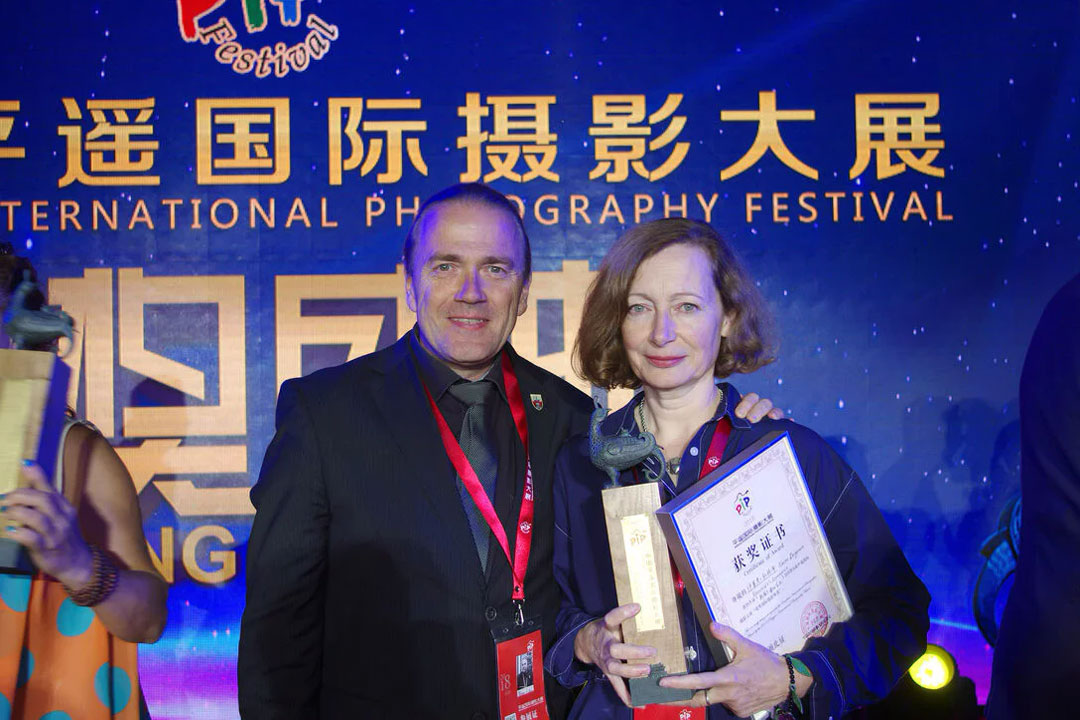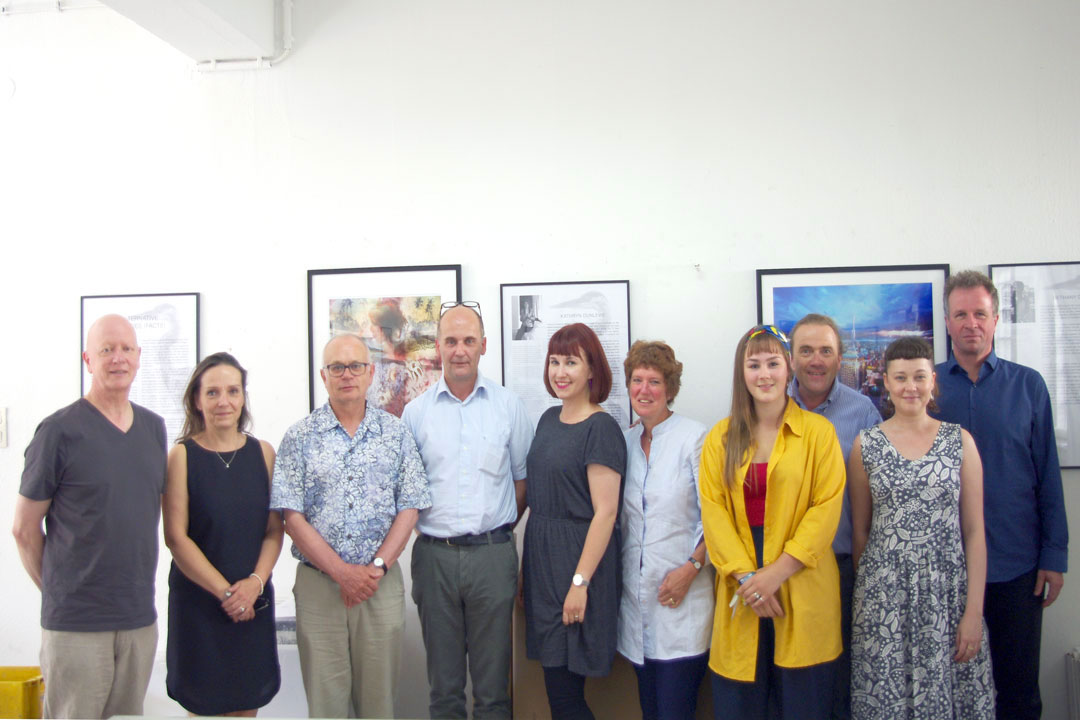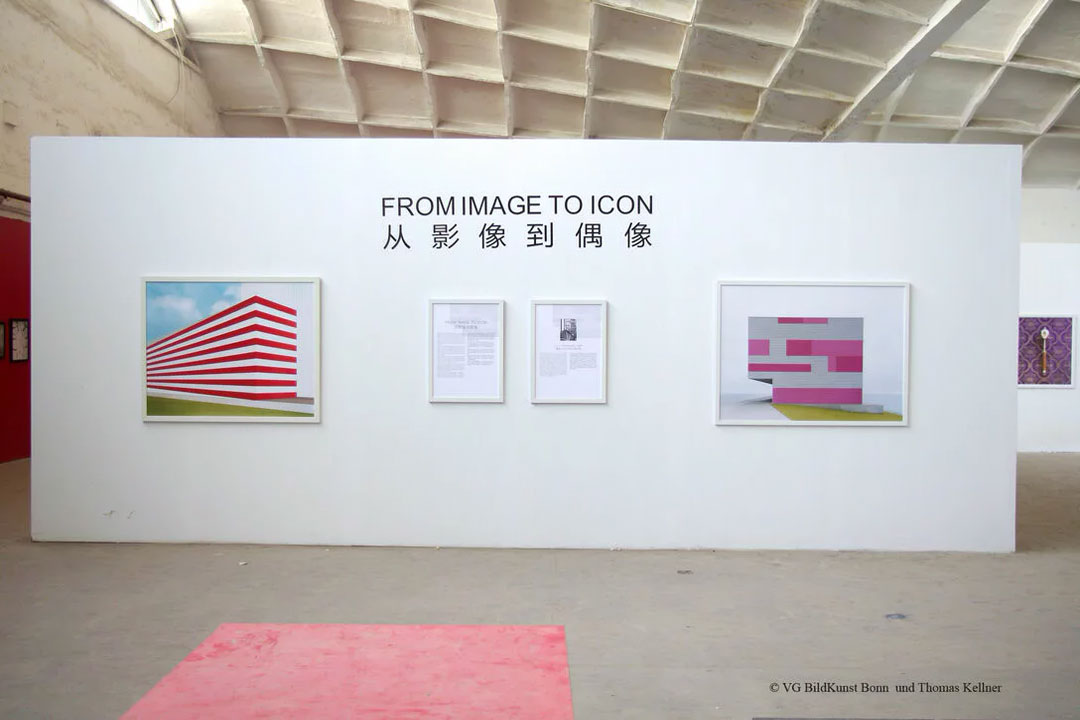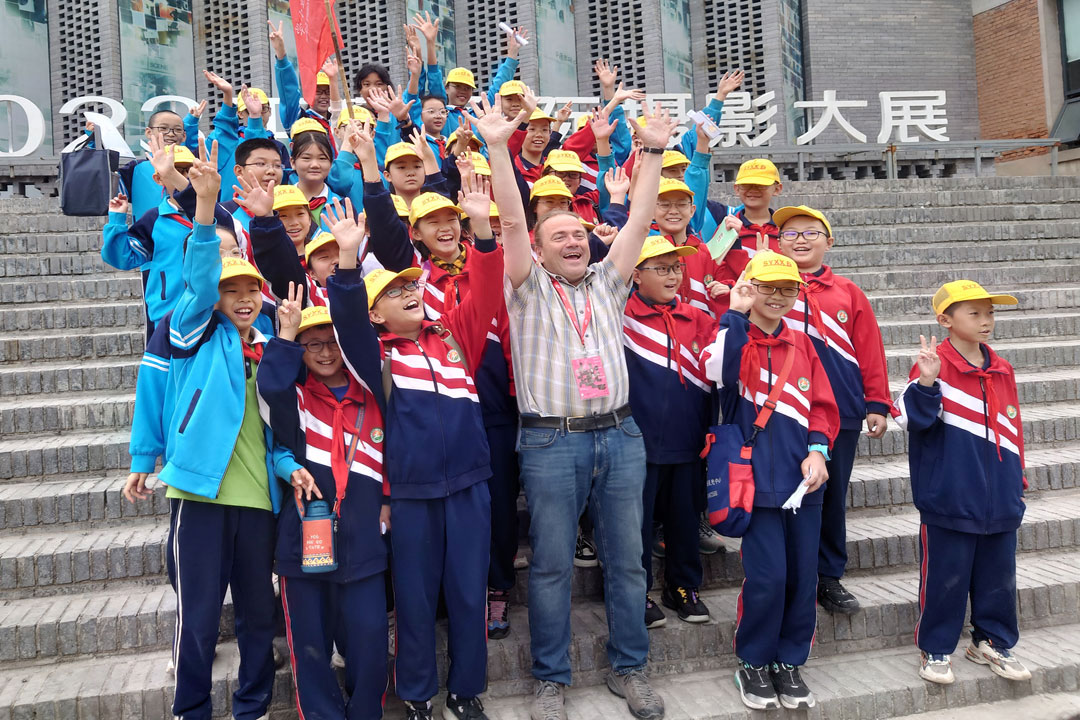Curator of Photography for Photography Exhibitions
Art exhibitions are often like a journey into another world, a world where the beauty and sense of works of art shine in their full glory. But who are the intellectual creators behind these fascinating exhibition experiences? The answer to this question leads us to the curators, the often invisible creators of exhibitions.
In the article, we will look at the word's origin, tasks, and training. A separate section will be devoted to Thomas Kellner as a photography curator.
About Thomas the photography curator
Thomas Kellner is known for his photographs of seemingly dancing architecture of tourist attractions from all over the world. He also writes for different photo magazines and regularly works as a curator of exhibitions... learn more
Learn about Thomas' various projects
Projects have always been Thomas Kellner's method to introduce Fine Art and Creativity to his community. Like Joseph Beuys called everybody an artist in its political meaning, Thomas Kellner creates projects to influence his area with Fine Art and Creativity, which should be a center interest in every city... Learn more
Read about Thomas' curated photography exhibitions
Thomas Kellner has been organizing shows since 1993, like Photo Trouvée about still life photography, or From image to Icon The Masterclass of Fine Art Photography of Bernhard & Hilla Becher at the Fine Arts Academy Dusseldorf. ...Learn more
Where his curated photography exhibitions were published
Media are frequently reporting about Thomas Kellner's curated exhibitions, such as PROFIFOTO, fotoMagazin and many others. Learn more
Word origin
The origins of the word curator lead us back to ancient Rome, where it coined the Latin word curator. This word, in turn, derives from curare, which means to take care of or manage. The Roman curatores were individuals who were responsible for the careful management of affairs or assets.
The timeless importance of curators
The importance of curators as custodians and stewards has changed little throughout history. Today, we find curators in various cultural and scientific fields, including art, museums, gallery, science, in catalogues and archives. They continue to be the keepers of treasures and cultural heritage, ensuring that they are preserved for future generations.
Task
The duties of curators are of immense importance and require a wide range of skills and responsibilities. Derived from the word root of stewardship, the range of curator duties extends far beyond mere administration. In the following context, the essential tasks of a curator in the field of art are explained in detail:
Curators are the creative architects behind the fascinating worlds of exhibitions. Their role carries significant value as they carefully select works, develop unique exhibition concepts, and design the presentation to fascinate and inspire visitors. However, the tasks are more complex than they might seem at first glance.
The craft of selection is a central task in a curator's portfolio. Curators are the decision-makers who, with an eye for quality and originality, carefully select works to touch and inspire the audience. Each selection is the result of meticulous consideration and a deep understanding of the creators and their works. This spans epochs from the Old Masters to current creators. There is an ability to selecting art that appeals both artistically and emotionally.
However, the job of curators goes far beyond merely selecting pictures. They are the directors of exhibition concepts that contextualize the picture and narrate stories. These concepts are as unique as the artworks themselves, providing the exhibition with a coherent and compelling structure.
Staging
Another crucial aspect of the duties of a curator is staging art. Curators possess the knowledge of presenting works in an atmosphere that subtly highlights and emphasizes their beauty and expressiveness. Proper lighting, arrangement of works, and choice of framing all play into ensuring that pieces shine in their full glory and enchant viewers.
In addition to this role, curators act as educational facilitators and ambassadors for the arts. They develop programs and materials to educate the public about art and the cultural significance of the collections. This includes organizing tours, lectures, and creating accompanying catalogs that enable the public to delve deeper into the world of art.
In today's art world, curators play a pivotal role as trailblazers. They promote emerging artists and influence new artistic trends. Curators are the driving force behind pushing the boundaries of the art world and conceiving innovative exhibitions that challenge and expand traditional notions of art.
Ethical Responsibility
Another fundamental aspect is ethical responsibility. Curators bear the responsibility for protecting and preserving our cultural heritage. Ethical considerations in handling collections and artworks are paramount, with the integrity and authenticity of the artworks always at the core of their work. Contextualizing artworks by specific creators plays a crucial role in conveying the significance and value of these works accurately.
Additionally, it's possible for curators to show special preference for creators who have already achieved success, aiming to directly engage a larger audience. However, this practice can result in repeated exhibitions of the same artists and present challenges for emerging artists. Hence, it's essential to provide space and opportunities for new virtuosos.
The passion for art and the ability to present it in all its glory and implications make exhibitions the inspiring and educational experiences that they are. In the hands of curators, art comes alive and becomes accessible to a broad audience.
Training of Curators
Following the analysis of the curator's tasks, let's delve into the training path and specialized approaches. The Curatorial Studies program at Goethe University in Frankfurt am Main provides an illustrative example, showcasing a potential training trajectory for aspiring curators. you can attend the course if you have a bachelor's degree (ba) in a cultural or arts subject
The program in Frankfurt is a collaborative master's program between Goethe University and the esteemed Hochschule für Bildende Künste-Städelschule. This program works closely with renowned institutions such as the Städel, the Liebieghaus Skulpturensammlung, the MMK Frankfurt, among others. Through this collaboration, the degree program facilitates a deep and meaningful connection between the university and the art academy.
The primary objective of this degree program is to offer a comprehensive academic immersion in the realms of overseeing exhibitions and criticism. Special emphasis is placed on surpassing contemporary discussions and extending managerial and art critical practices to historical periods. Given the evolving global art landscape, the advancements in postcolonial theorizing, and geopolitical shifts since the Cold War's conclusion, presenting pieces and cultural-historical artifacts has become a significant sociopolitical challenge. This necessitates a thoughtful exploration of art historical, cultural, social, political, and philosophical dimensions.
The master's program thus provides prospective curators, exhibition coordinators, and critics with a robust theoretical and practical foundation for their professional growth. Students are granted the chance to integrate subject-specific expertise with specialized concerns and hands-on abilities. The program is distinguished by its close collaboration with specialized university institutes, esteemed collections, and an internationally recognized art academy.
Consequently, universities offer dedicated study courses tailored to this professional cohort. Nonetheless, it is essential to highlight, especially when examining accomplished curators in the subsequent article, that this career path can also be shaped through various alternative routes.
Famous Curators and Their Perspectives.
Artland Magazine printed prominent curators, including Hans Ulrich Obrist, Carolyn Christov-Bakargiev, and Okwui Enwezor.
Hans Ulrich Obrist
Hans Ulrich Obrist, a distinguished Swiss curator and co-director of the Serpentine Galleries in London, stands out in the art world. Born in Zurich in 1968, he initially pursued studies in economics and politics before shifting his focus to the world of contemporary and modern artistic practices. Obrist, as a curator, has acted as associate curator for Manifesta 1 and conducted numerous interviews with notable creators and creatives, solidifying his significant role in the landscape of present-day art.
Hans Ulrich Obrist's distinctive museological approach sets him apart as one of the most innovative figures in the art world. He defines his role as a catalyst and facilitator of creative dialogues among artists, rather than positioning himself as a creative competitor. In this capacity, he creates opportunities for projects that might not have come to fruition for various reasons, allowing them to be viewed in a fresh perspective.
A significant milestone in Obrist's professional journey is the "Do It" project an ongoing exhibition where artists provide detailed instructions on organizing exhibitions anywhere in the world. This concept emphasizes collaborative art creation and encourages global participation in the conception and presentation of art. "Do It" unfolds a diverse and democratic view of art, breaking down traditional boundaries between artists and audiences, promoting active involvement in the creative processes.
In essence, these projects mirror Obrist's dedication to promoting art in all its dimensions. His approach underscores the curator's role as an enabler and mediator between creator, artworks, and audiences, enriching the art world in inspiring and inclusive ways.
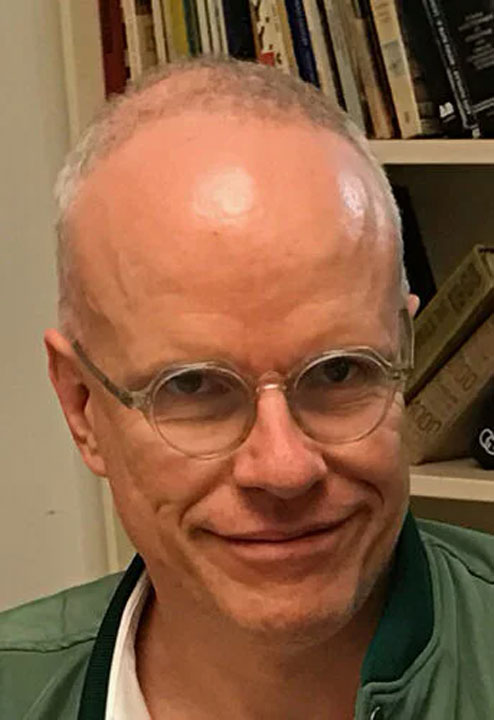
Carolyn Christov-Bakargiev
Independent curator Carolyn Christov-Bakargiev has garnered an exceptional reputation for her pioneering projects. One of the most notable achievements is her directorship of documenta 13 in 2012, hailed as one of the most significant exhibitions of its kind. This remarkable edition of documenta transcended the boundaries of its traditional venue in Kassel, extending to unconventional locations such as Kabul, Alexandria, and Banff.
Under Christov-Bakargiev's guidance, documenta 13 evolved into a groundbreaking creative event, leveraging culture and artistic expression to aid in reconstruction, healing, and fostering dialogues.
Carolyn Christov-Bakargiev has also occupied significant positions at esteemed institutions throughout her career. She served as the senior curator at the P.S. 1 Center in New York, a leading institution in the United States. Additionally, she occupies the positions of director at the Castello di Rivoli and the GAM (Galleria Civica d'Arte Moderna e Contemporanea) in Turin. Her roles in these institutions have firmly established her as a noteworthy curator and cultural manager.
Another significant milestone in her career was her prominent inclusion on Art Review magazine's Power 100 list. In 2012, Carolyn Christov-Bakargiev became the first woman to claim the top spot on this influential list. This achievement emphasizes her prominent role and influence in the international art world. Her work has not only influenced the conception and curation of exhibitions but has also advanced the connection between art, culture, and societal issues.
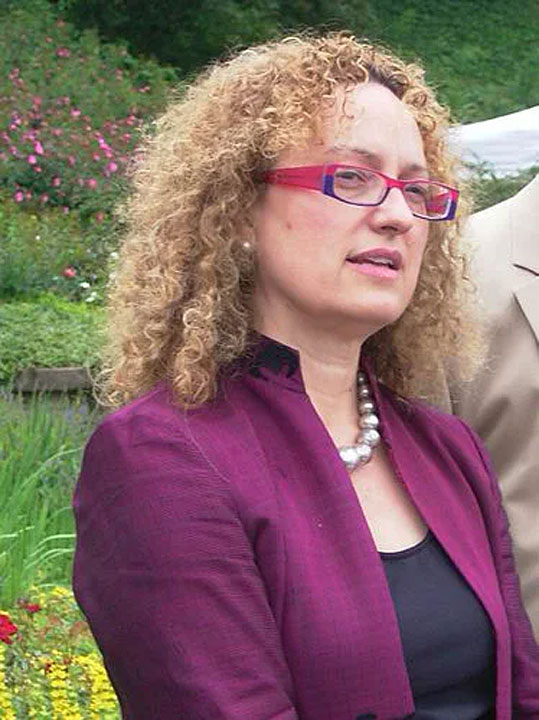
Okwui Enwezor
Okwui Enwezor (1963-2019) was a visionary curator who made a lasting impact on the art world with his unique approach and dedication to promoting African art. Originally from Nigeria, he moved to the United States in the 1980s and initially pursued studies in political science. However, he was soon captivated by the world of art, especially after observing the notable absence of African creators in art exhibitions. This realization not only led him to critique the situation but also to actively promote African art. He even established his own esteemed art magazine, "Nka: Journal of Contemporary African Art."
Enwezor's journey to prominence commenced with his involvement in the 1996 exhibition "In/sight," a groundbreaking showcase of African photography at the Guggenheim Museum SoHo in New York City.
One of his groundbreaking exhibitions was "The Short Century: Independence and Liberation Movements in Africa, 1945-1994," presented in 2002 at MoMA P.S. 1 in Queens, New York. With this exhibition, he demonstrated how art could be a powerful tool for expressing social change and provided a platform for reflecting on African political history.
Enwezor's remarkable contributions to the art world led to his appointment as the curator of documenta in Kassel in 2002. This documenta is widely regarded as the first truly global and postcolonial edition of the renowned art show. His tireless commitment to promoting art from Africa and other underrepresented regions gave documenta a new dimension and inspired a more open view of the diversity of artistic expression worldwide.
Another highlight of his career was his appointment as the curator of the Venice Biennale in 2015, making history as the first African curator of this prestigious art event. His contributions to the Venice Biennale once again expanded the horizons of the art world and led to increased recognition of the global art scene.
Although Okwui Enwezor passed away far too early in March 2019, he left a lasting legacy in the art world. His work as a curator, his commitment to promoting underrepresented artists, and his contributions to the global art scene are appreciated and admired long after his passing.
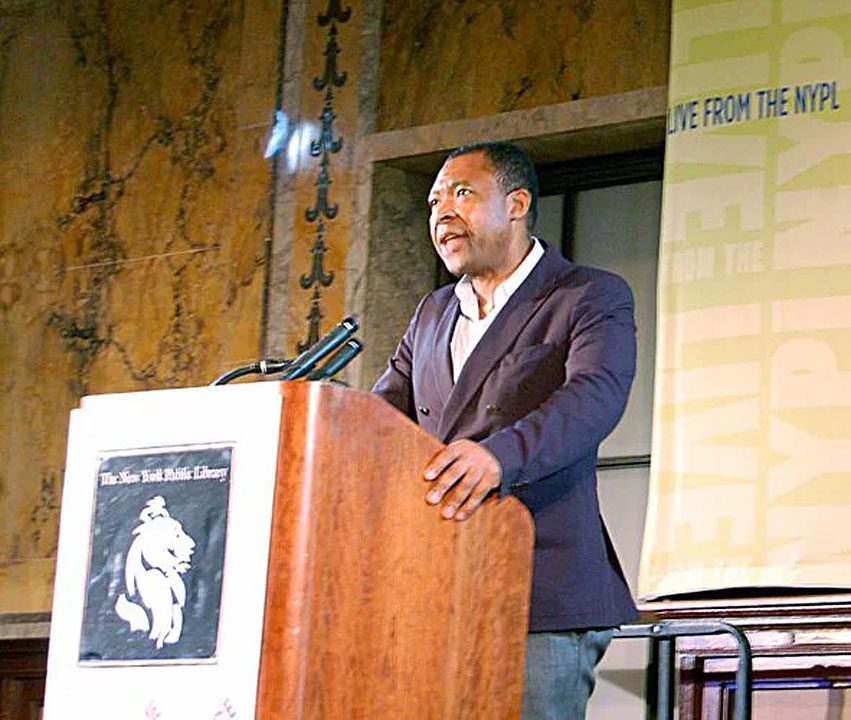
Selection of Curators for Major Exhibitions
As previously emphasized, curators have a significant role in the realm of creativity, making their function particularly important in prominent exhibitions like Documenta 16. Documenta represents a global exhibition held every five years in Kassel, Germany, offering a comprehensive overview of current creative trends. The process of selecting curators for this exhibition is highly demanding, with both experienced and former curators playing a significant role. This approach underscores the importance of continuity and the exchange of experience in work as a curator. In the case of Documenta 16, members of the search committee were chosen by former artistic directors of Documenta to devote their expertise and perspectives in shaping the next edition of this renowned art event. This process ensures a certain level of continuity and contributes to the quality and relevance of Documenta exhibitions.
This is particularly important in light of the anti-Semitism scandal at Documenta 15, where the collective in charge of curating the fair, Ruangrupa, selected a painting that displayed anti-Semitic content, sparking a significant debate. This once again underscores the importance of the ethical aspect, which was already outlined in the defined tasks. There are perspectives that are indefensible. It is crucial that indivoidual or collective curators are conscious that they are providing a platform for the artist. In collectively co-curated shows, they should also take into account the values associated with the work.
Curators at the Hometown, MGK Siegen
The current curators closely affiliated with the Museum of modern art Siegen are Professor Dr. Christian Spieß, who serves as the curator of the Lambrecht-Schadeberg Collection, and Ines Rüttinger, who occupies a curator position.
Prof. Dr. Christian Spieß
Prof. Dr. Christian Spieß has been releasing publications related to and exercising the role of curator for the Lambrecht-Schadeberg Collection at the MGK Siegen since 2012. Additionally, he has occupied the position of professor of art history with a focus on modern and contemporary painting and aesthetic theories at the University of Cologne since 2017. His academic journey involved studies in education, and German language and literature at esteemed universities such as the University of Siegen, Gainesville Florida, Frankfurt, and Basel. He successfully completed his PhD at the University of Basel with a dissertation titled "On the Inertia of the Image: Pictoriality and Time between Painting and Video," focusing significantly on the aspect of curating.
Ines Rüttinger
Ines Rüttinger, an art historian, has nearly five years of professional experience at the MGK Siegen. During her tenure, she served as a research assistant and later transitioned into a curator role. From February 2022 onward, she has been actively shaping many exhibitions and managing collections. Before assuming her current role, she occupied an interim management position at StadtGalerie Neuwied and established a successful career as a freelance historian.
Her academic career reflects her strong commitment to this field. Ines Rüttinger completed a bachelor's degree in art history and a subsequent master's degree at the renowned Christian Albrechts University in Kiel.
Rubens Prize
The Rubens Prize is a highly esteemed art award presented by the city of Siegen, Germany, every five years. It is named in honor of the renowned Baroque painter, Peter Paul Rubens, and is intended to recognize artists for their exceptional contributions to the world of art. This prize is among the most prestigious accolades in the art realm and typically includes both financial support and a solo exhibition of the awardee's work at the Museum of Contemporary Art Siegen.
The solo exhibition associated with the prize bears immense significance. An exemplary case is the artist Miriam Cahn, whose impactful works delve into the delicacy of human existence. The curator responsible for these exhibitions is Thomas Thiel, the director of the Museum of Contemporary Art. The invaluable contributions of the three aforementioned curators play a pivotal role in shaping and enhancing the artistic quality and expressive power of these exhibitions.
In this context, it is important to note that the Museum für Gegenwartskunst Siegen employs a diverse group of individuals who adopt distinct approaches to curation. This highlights how curators wield significant influence over the presentation and interpretation of art through their unique perspectives and methodologies.
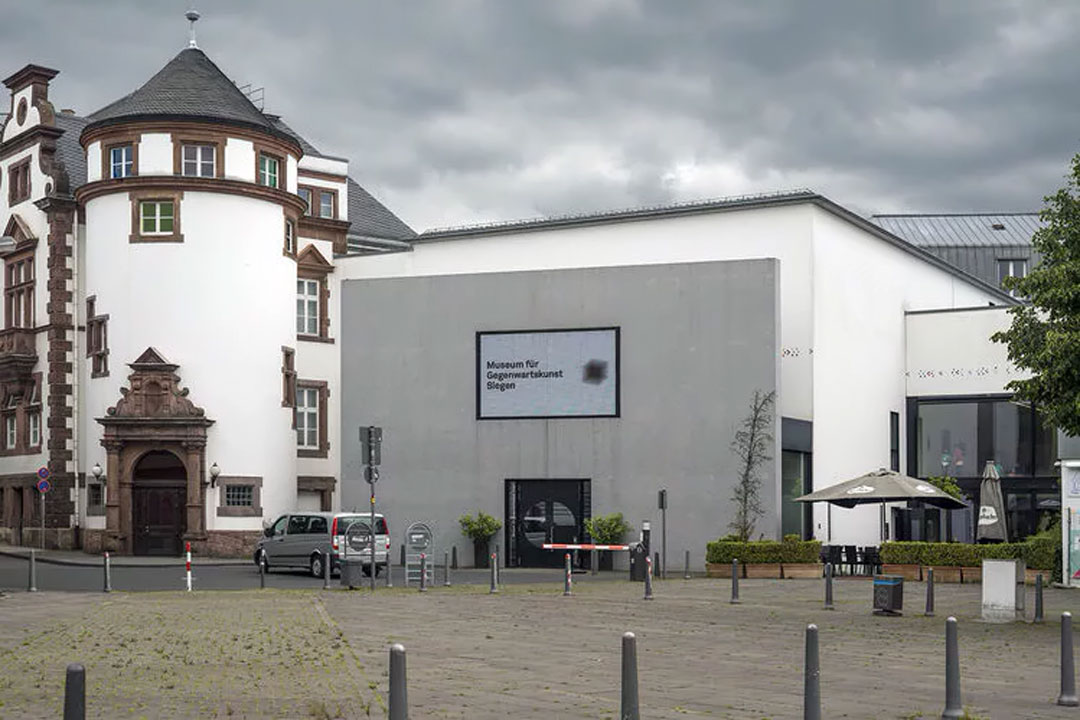
Thomas Kellner Curator Photography
"What interests me would probably be formulated in German as Zeitgeist (spirit of the time). I look at what colleagues are doing and find connecting lines and common interests..."
In addition to his artistic practice, German photographic artist Thomas Kellner (born 1966 in Bonn, ) and member of the Siegerland Artists' Workgroup, an association of art and creators in and around the town of Siegen, is also an ambitious curator and regularly takes on this role in various exhibitions. Kellner identifies himself as an artist curator. But what exactly does this term entail, and how does it integrate into this narrative?
In an interview, Kellner emphasizes that the leitmotif of the Zeitgeist is a driving force in his work as curator and forms the foundation of his approach. Through numerous journeys, partly spurred by his own artistic endeavors, a collective visual memory has emerged. This knowledge is further enriched by his personal engagement with creativity and his role as a juror. It represents a reflection of his own visual experiences, which are organized and molded through his unique contextualization. Building upon this, he crafts exhibition concepts.
This is the distinction from the conventional curator training, as previously elucidated. Traditional training in as a curator operates within a defined body of knowledge encompassing established theories and perspectives that have gained prominence in research over the years and are frequently referenced in academic discourse. However, this approach can inadvertently cause a shift in perspective. Researchers, typically undergoing extensive training, gain prominence after approximately 10 years and continue to conceive and reproduce views from this established standpoint. Consequently, they often find themselves rooted in an historical perspective, moving asynchronously with the artistic viewpoint. The latter usually encapsulates the zeitgeist ( spirit of the time) and contemporary events in their work.
Kellner's strong connection with creators is further evident in the following quote, which places a spotlight on the creators of the artworks:
"In the beginning, it's not about the idea; it's about the artists. Initially, I explore new works by young artists and then connect them with old works I already know."
This underscores Kellner's commitment to providing opportunities for emerging creators, directly offering them a platform to integrate into his network for potential future exhibitions. Additionally, he emphasizes his evolution since conceiving his first exhibition. Over time, this collective image memory has expanded, enabling him to better categorize and contextualize artworks. Consequently, in curatorial endeavors, he has the opportunity to tailor the works to each other more effectively and further develop his concept anchored in the spirit of time.
Exhibition in the spirit of time
Since 1993, Thomas Kellner has acted as a curator for various exhibitions, including his inaugural exhibition Camera Obscura, and the most recent exhibition titled Look.
Camera Obscura (1993, university)
Camera Obscura was an exhibition where twenty photographers showcased their work using the camera obscura. The exhibition also featured contributions from seven authors discussing various aspects of this form of photography. The inception of this project stemmed from a desire for interdisciplinary dialogue among emerging photographers from diverse educational backgrounds and training locations.
Look (2023)
Look! is an exhibition put together by Thomas Kellner, presented at the Pingyao International Photography Festival 2023 in China. This significant event in the realm of photography boasts a staggering 20,000 images contributed by 2,000 authors and photographic artists, showcased across 400 exhibitions. Kellner's exhibition, organized by the renowned independent curator and held at the center for photography, particularly zooms in on contemporary photography that seamlessly melds performance and staging. The collection encompasses works by eight photographers hailing from diverse countries. These images offer profound insights into various cultures and identities, providing a glimpse into our ever-evolving world, expressing a range of emotions, and illuminating the unique essence of each portrait.
Within the exhibition, Dan Nelken's works powerfully depict the strength of working women in Uganda, while Patty Caroll and Suzanne Banning delve into the intricacies of human nature through photography centered on mannequins and reflected self-portraits. This diverse narrative within the photography exhibition intertwines contemporary photography with the history of photography, offering a critical reflection on our evolving relationship with the camera in the digital age. This, in turn, prompts contemplation on authenticity and self-perception.
The Curator's Identity in Photography Exhibitions
In the descriptions of the exhibitions, Kellner's quote underscores the presence of zeitgeist, be it among young students or individuals from diverse cultural backgrounds shaped by their distinct daily experiences. Consequently, the exhibitions are envisioned to encapsulate and reflect precisely this essence, permitting the images to complement one another while allowing ample room to distinctly discern the unique aspects of each creator.
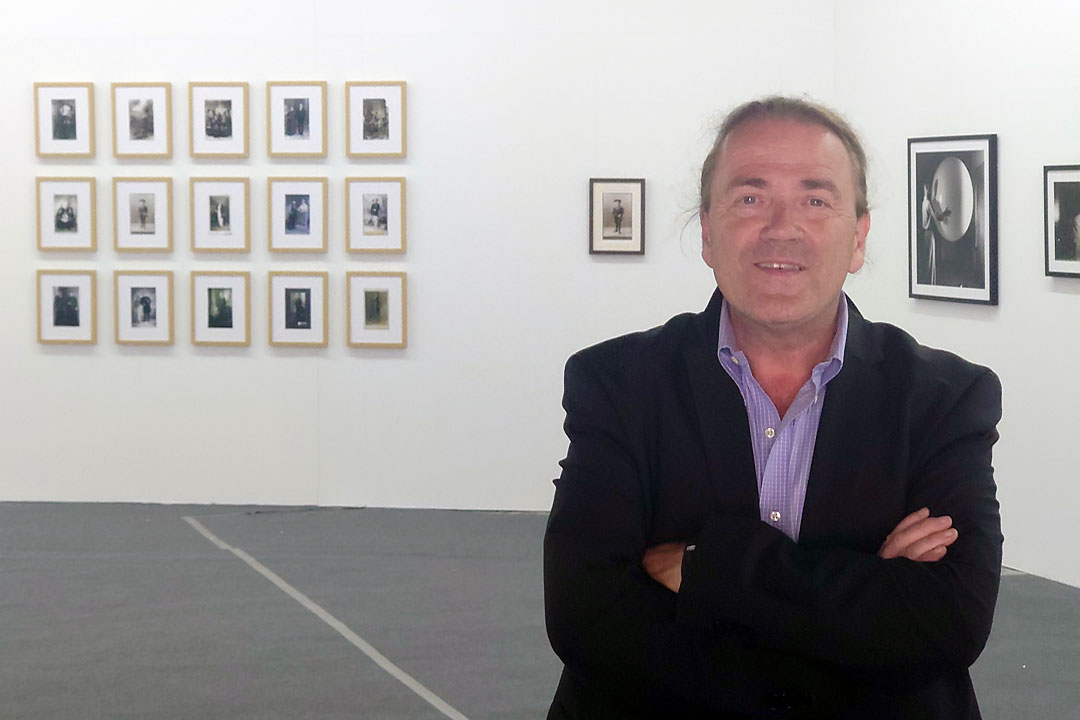
Conclusion
In conclusion, this essay illustrates the multifaceted nature of the curator's role, which significantly varies based on the individual and their distinct background. A new dimension in considering exhibitions unfolds when numerous factors are taken into account, including the arrangement of pictures, the contributions from specific creators, or the creation of a cohesive structure that allows the works to harmonize effectively. This underscores the criticality of placing the guided tour of an exhibition in the hands of capable individuals, providing ample space for the appreciation of artistic expression and aesthetics.
